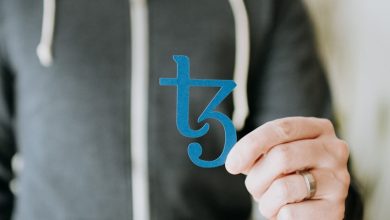The Impact of News on Crypto Prices: Trading Strategies

- Understanding the correlation between news and crypto prices
- Analyzing the influence of media coverage on cryptocurrency market fluctuations
- Exploring the role of breaking news in shaping trading strategies for digital assets
- The psychological impact of news events on cryptocurrency investors
- How to use news analytics to make informed trading decisions in the crypto market
- Case studies of successful trading strategies based on news analysis in the world of cryptocurrencies
Understanding the correlation between news and crypto prices
The correlation between news and crypto prices is a topic of great interest to many investors and traders in the cryptocurrency market. It is widely believed that news events can have a significant impact on the prices of cryptocurrencies, causing them to either rise or fall depending on the nature of the news. Understanding this correlation is crucial for developing effective trading strategies that can help maximize profits and minimize losses.
News events such as regulatory developments, technological advancements, market trends, and economic indicators can all play a role in influencing the prices of cryptocurrencies. For example, positive news about a new partnership or adoption by a major company can cause the price of a cryptocurrency to surge, while negative news such as a security breach or regulatory crackdown can lead to a sharp decline in prices.
By staying informed about the latest news and developments in the cryptocurrency space, traders can make more informed decisions about when to buy or sell their assets. It is important to remember, however, that not all news events will have a significant impact on prices, and that market reactions can sometimes be unpredictable. Developing a keen understanding of the relationship between news and crypto prices can help traders navigate the volatile cryptocurrency market more effectively.
Analyzing the influence of media coverage on cryptocurrency market fluctuations
The influence of media coverage on cryptocurrency market fluctuations cannot be overstated. News outlets play a crucial role in shaping public perception and sentiment towards cryptocurrencies, which in turn impacts their prices. Positive news stories about a particular cryptocurrency can lead to a surge in demand, driving up its price. On the other hand, negative news can have the opposite effect, causing prices to plummet.
It is essential for cryptocurrency traders to stay informed about the latest news and developments in the industry. By monitoring news outlets and social media channels, traders can gain valuable insights into market trends and sentiment. This information can help them make more informed trading decisions and capitalize on market opportunities.
However, it is important to note that not all news stories have the same impact on cryptocurrency prices. Major news outlets and influential personalities in the industry tend to have a more significant influence on market fluctuations compared to smaller, less reputable sources. Traders should be discerning in their news consumption and prioritize information from reliable sources.
Exploring the role of breaking news in shaping trading strategies for digital assets
Exploring the role of breaking news in shaping trading strategies for digital assets is crucial for investors looking to stay ahead in the volatile cryptocurrency market. When significant news breaks, whether it be regulatory developments, technological advancements, or market trends, it can have a profound impact on the prices of cryptocurrencies.
Being able to react quickly and effectively to breaking news can mean the difference between substantial profits and significant losses in crypto trading. Traders need to stay informed and have a solid understanding of how news events can influence market sentiment and price movements.
Developing a trading strategy that incorporates breaking news analysis can help traders capitalize on opportunities presented by sudden price fluctuations. By staying informed and being prepared to act swiftly, investors can position themselves to make well-informed decisions that align with the market’s current conditions.
Ultimately, breaking news plays a vital role in shaping trading strategies for digital assets, offering traders valuable insights into market dynamics and potential opportunities for profit. By staying informed and adaptable, investors can navigate the ever-changing landscape of cryptocurrency trading with confidence and success.
The psychological impact of news events on cryptocurrency investors
The psychological impact of news events on cryptocurrency investors can be significant. When investors hear positive news about a particular cryptocurrency, such as a new partnership or technological breakthrough, they may feel more confident in their investment and be more likely to buy or hold onto their coins. On the other hand, negative news, such as security breaches or regulatory crackdowns, can create fear and uncertainty, leading investors to sell off their holdings in a panic.
This emotional response to news events can create volatility in the crypto market, as investor sentiment can quickly shift based on the latest headlines. For example, when news of a major exchange hack breaks, investors may rush to sell their coins, causing prices to plummet. Conversely, positive news like a government endorsement of a cryptocurrency can lead to a surge in buying activity.
It is essential for cryptocurrency investors to stay informed about the latest news and developments in the market to make informed trading decisions. By closely monitoring news sources and staying up to date on market trends, investors can better anticipate how news events may impact prices and adjust their strategies accordingly. In a market as volatile as cryptocurrency, staying ahead of the news can make all the difference between profit and loss.
How to use news analytics to make informed trading decisions in the crypto market
Utilizing news analytics for making informed trading decisions in the crypto market is crucial for staying ahead of the curve. By staying up to date with the latest news and developments in the crypto space, traders can gain valuable insights into market trends and sentiment.
One effective strategy is to use news aggregation tools that compile news articles, social media posts, and other sources of information related to cryptocurrencies. These tools can help traders identify emerging trends and market-moving events that may impact crypto prices.
Another key aspect of using news analytics is to analyze the sentiment of news articles and social media posts. By gauging whether the overall sentiment is positive or negative, traders can better understand how the market may react to specific news events.
Furthermore, it is essential to cross-reference news from multiple sources to ensure its credibility and accuracy. Relying on a single source of information can lead to biased or incomplete insights, potentially resulting in poor trading decisions.
Overall, incorporating news analytics into your trading strategy can provide a competitive edge in the volatile crypto market. By staying informed and analyzing news data effectively, traders can make more informed decisions and capitalize on opportunities as they arise.
Case studies of successful trading strategies based on news analysis in the world of cryptocurrencies
Case studies have shown that successful trading strategies based on news analysis in the world of cryptocurrencies can yield significant profits for investors. By staying informed about the latest developments in the crypto market, traders can make well-informed decisions that capitalize on price movements.
One example of a successful trading strategy is to monitor news related to regulatory developments in the cryptocurrency space. When governments announce new regulations or policies that impact the use of digital assets, prices of certain cryptocurrencies can be affected. By anticipating these changes and adjusting their positions accordingly, traders can profit from the resulting price fluctuations.
Another approach is to pay attention to news about partnerships and collaborations within the crypto industry. When companies announce strategic alliances or new projects, it can have a positive impact on the prices of the cryptocurrencies involved. Traders who are quick to react to these announcements can take advantage of the price momentum and generate profits.
Furthermore, news about technological advancements and innovations in the blockchain space can also influence crypto prices. For example, the launch of a new blockchain platform or the implementation of a scaling solution can lead to increased interest from investors and drive up prices. By staying abreast of these developments, traders can position themselves to benefit from the resulting price surges.
In conclusion, incorporating news analysis into trading strategies can be a powerful tool for navigating the volatile world of cryptocurrencies. By staying informed and reacting swiftly to relevant news events, traders can maximize their profits and minimize their risks in this fast-paced market.



